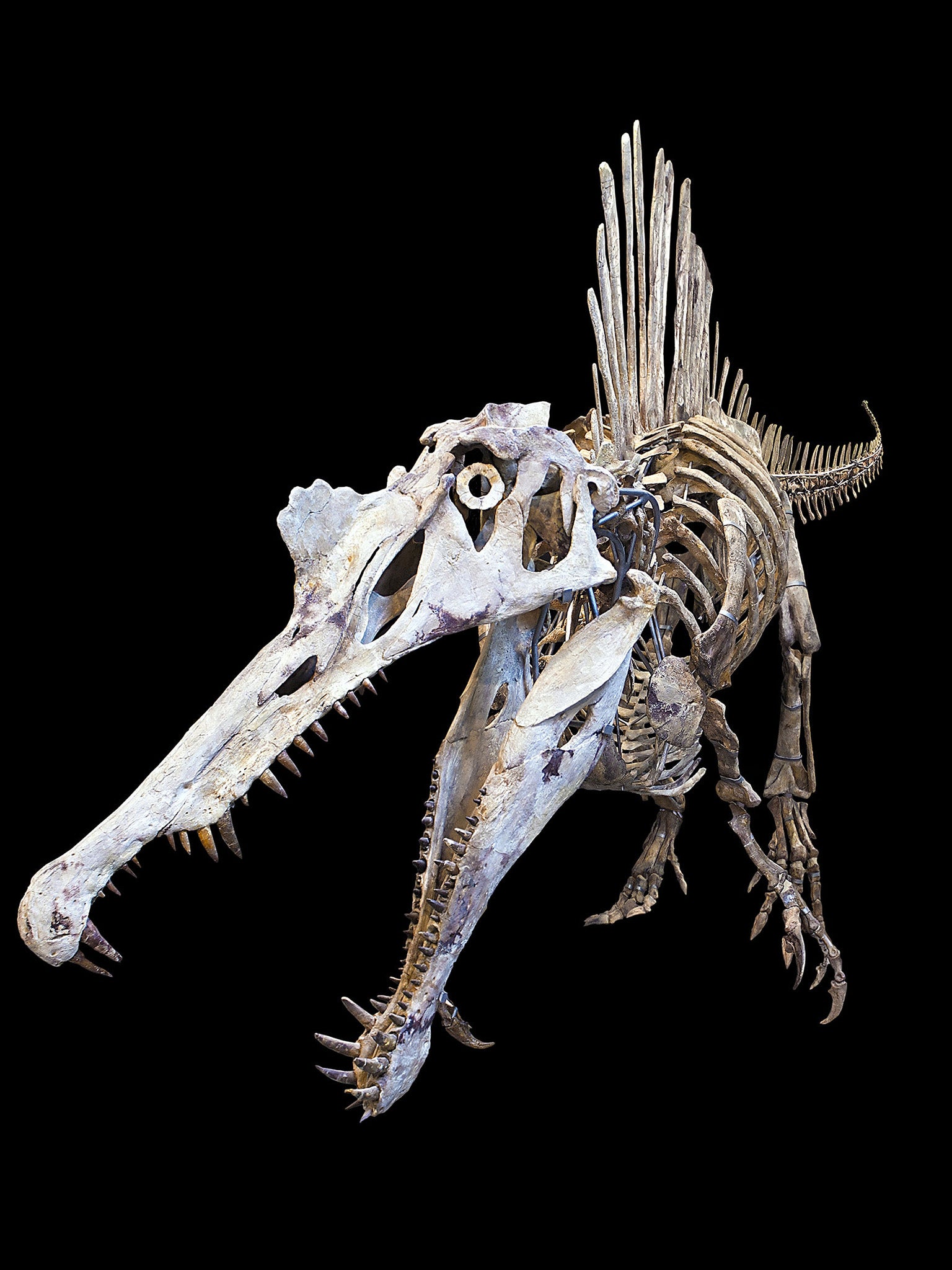Spinosaurus: Largest prehistoric predator was ‘water-loving’ dinosaur which swam to hunt fish
Palaeontologists used bone density to determine that giant carnivore would submerge for meals

Your support helps us to tell the story
From reproductive rights to climate change to Big Tech, The Independent is on the ground when the story is developing. Whether it's investigating the financials of Elon Musk's pro-Trump PAC or producing our latest documentary, 'The A Word', which shines a light on the American women fighting for reproductive rights, we know how important it is to parse out the facts from the messaging.
At such a critical moment in US history, we need reporters on the ground. Your donation allows us to keep sending journalists to speak to both sides of the story.
The Independent is trusted by Americans across the entire political spectrum. And unlike many other quality news outlets, we choose not to lock Americans out of our reporting and analysis with paywalls. We believe quality journalism should be available to everyone, paid for by those who can afford it.
Your support makes all the difference.Spinosaurus, the biggest known predatory dinosaur, was a “water-loving” carnivore that swam after its prey while fully submerged, according to new research.
Palaeontologists have long thought the late Cretaceous giant – which stretched more than ten average adult men in length – hunted water-dwelling creatures but whether it would swim or simply snap up its prey from the shallows was a matter of debate.
A new paper published in Nature by a group of palaeontologists drew on research into the bone density of swimming species to determine that the spinosaurus would indeed have headed underwater to hunt.
A team led by Dr Nizar Ibrahim, University of Portsmouth palaeontologist and National Geographic explorer, unearthed different parts of a Spinosaurus skeleton in North Africa’s Sahara desert.
The skeleton had retracted nostrils, short hind legs, paddle-like feet, and a fin-like tail: all signs that suggested an aquatic lifestyle.
Dr Ibrahim said: “We battled sandstorms, flooding, snakes, scorpions and more to excavate the most enigmatic dinosaur in the world and now we have multiple lines of evidence all pointing in the same direction – the skeleton really has ‘water-loving dinosaur’ written all over it!”
The team sought to prove their theory by comparing the bone density of the spinosaurus skeleton with known swimmers.

Dr Matteo Fabbri, a palaeontologist at Chicago’s Field Museum and lead author of the paper, said: “The idea for our study was, okay, clearly we can interpret the fossil data in different ways.
“But what about the general physical laws? There are certain laws that are applicable to any organism on this planet. One of these laws regards density and the capability of submerging into water.”
Across the animal kingdom, bone density can reveal whether an animal is able to sink beneath the surface and swim.
“Previous studies have shown that mammals adapted to water have dense, compact bone in their postcranial [behind the skull] skeletons,” said Dr Fabbri, an expert on the internal structure of bone.
Dense bone helps with buoyancy control and allows an animal to submerge itself.
Animals that submerge themselves underwater to find food have bones that are almost completely solid throughout, while cross-sections of land-dwellers’ bones look more like doughnuts, with hollow centres.
The team assembled a dataset of femur and rib bone cross-sections from 250 species of living and extinct species – both land-dwellers and water-dwellers from mice to whales.
They also collected data on extinct marine reptiles like mosasaurs and plesiosaurs.
Cross-sections of bone from these animals were compared to cross-sections from spinosaurus and its relatives baryonyx and suchomimus.
The spinosaurus was found to have the type of dense bone associated with full submersion.
The baryonyx, a smaller carnivore of the same family, had a similar bone density, while the suchomimus, notable for its long crocodile-like jaws, had hollower bones and was determined to have hunted by water without swimming.
Dr Jingmai O’Connor, a curator at the Field Museum and co-author of this study, says that collaborative studies like this one that draw from hundreds of specimens are “the future of palaeontology. They’re very time-consuming to do, but they let scientists shed light onto big patterns.”
Dr Ibrahim next wants to study how the swimming giant would have moved underwater.
Join our commenting forum
Join thought-provoking conversations, follow other Independent readers and see their replies
Comments